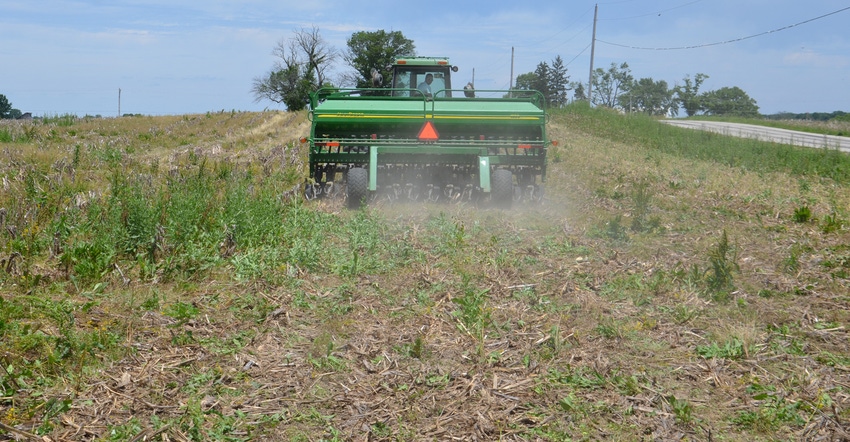January 2, 2020

We pulled our older John Deere 750 no-till drill out of the shed last spring, put a high school kid on the tractor, and he planted 400 acres that we probably wouldn’t have got planted otherwise. All our beans were planted in June. Some of those drilled beans were as good as any we planted using the 15-inch split-row planter. Should we get the drill back out this year, find another student and get beans in quicker? Or should we park it back in the shed or sell it?
The panel of Indiana certified crop advisers answering this question includes Steve Gauck, Beck’s sales agronomist, Greensburg; Andy Like, Syngenta, Vincennes; and Jeff Nagel, Ceres Solutions agronomist, Lafayette.
Gauck: Planting soybeans early does have an advantage from a yield standpoint. This year we saw many cases where old drills came out to plant soybeans and resulted in respectable yields. Well-maintained drills can do a good job, and for many farmers, a drill fits their operation. However, think back to why you stopped using that drill. Soybeans, like corn, yield better when planted at a consistent depth and with better spacing. Many drills struggle to do both of those things consistently. I would look at planting your soybeans earlier with the split-row planter, even before you start corn, to maximize your soybean yields.
Like: Let’s hope 2020’s weather will be more favorable than 2019 and bringing the Deere 750 drill out will not be necessary. Seeing how the drill proved to be valuable in 2019, I would recommend keeping it in the barn as a backup. You won’t need it unless it gets late like it did last year. A used drill like yours would likely fetch around $15,000, so keeping it around for late wet springs is not an expensive option when compared to not getting 400 acres planted.
Nagel: Sounds like you made a good management decision in 2019. If the drill is in good shape, you can find someone to run it that you trust, and it allows you to plant in a more timely manner, then use it. Timely planting is one key component of high soybean yield potential. Many farm operations have a corn and soybean planter running simultaneously.
Most research suggests that drilled or 15-inch row spacing, compared to 30-inch rows, tends to yield better over time. Generally, there is not much yield difference between 7.5-inch and 15-inch row spacing. Drilled soybeans will reach canopy a little quicker, which is a good thing. If white mold has been an issue in the past, then drilled soybeans would not be the preferred row spacing.
You May Also Like




